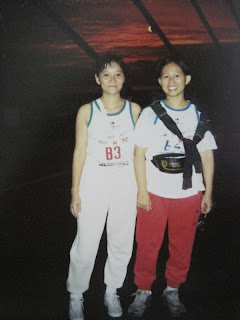 |
| My 1st edition copy of Tulang2 Berserakan |
Tulang2 Berserakan by Usman Awang (1929-2001), is his one and only novel, written in 1962 but first published in 1966 by Pustaka Melayu Baru, KL.
Dewan Bahasa & Pustaka also published it again in 1992 as Tulang Tulang Berserakan (with the new spelling as appropriate with the time) as part of our National Laureate's works. Usman Awang, also known as Tongkat Warrant, was conferred the title in 1983, and he was mainly a Poet and Dramatist (remember Uda & Dara?). In 2009 the English translation entitled 'Scattered Bones' was published by the Institut Terjemahan & Buku Malaysia.
About Tulang2 Berserakan; it is deemed a semi autobiographical novel. The protagonist Leman (Usman?) joins the police force in Melaka during the Malayan Emergency; the war and conflict between the British colonists and the Malayan communists. The story is about the camaraderie and dilemma faced by Leman and his fellow policemen as they go about their lives at 'work', their dealings with the public as policemen (and then the 'Jungle Squad') and their own personal undertakings. Usman's dilemma is well reflected in this dedicated poem at the back of the book;
Buat teman-temanku yang dikasihi
gelakmu hangus di hutan malam
tinggallah sedu di bilik ibu
(lihat tugu 'indah'mu tegak terdiri
yang dipahat oleh tangan asing
seperti mengalirnya darahmu untuk orang lain).
Buat mereka yang tak pernah disapa
atas keberanian dan keyakinan
dengan sedar menerima segala derita
Kita dan mereka bersama-sama
menggali lalu menimbuni rangka
dari tulang-tulang berserakan ...
The first time I read the book was in 1967 in TKC, when I received it as a prize (Hadiah dari Persatuan Bahasa Melayu bagi Darjah Terbaik dalam Peraduan Tarian, Malam Irama). Interestingly, we got to perform our winning dance before Usman Awang himself when he visited TKC the same year. Of course I got him to sign my book, a first edition (chetakan pertama 1966), mind you!
 |
| Usman Awang's signature on the title page of my copy of his book (CNB 2012) |
Ex Libris CNB 0461









































